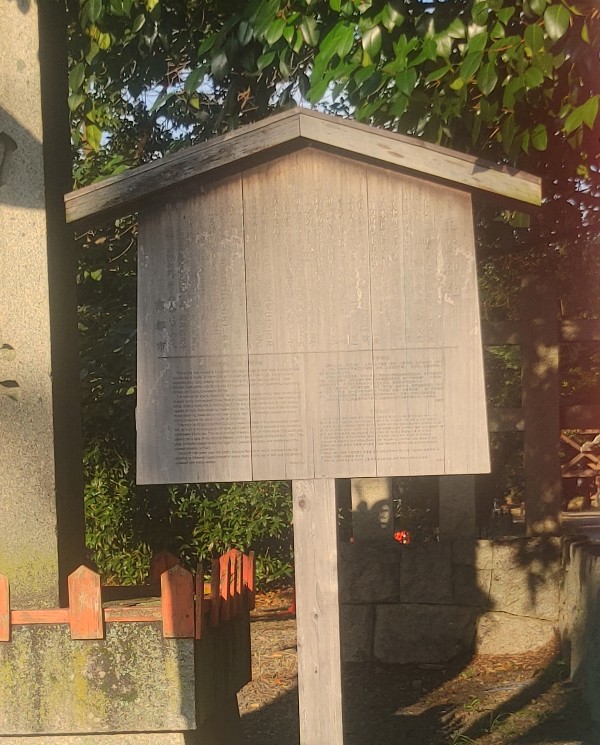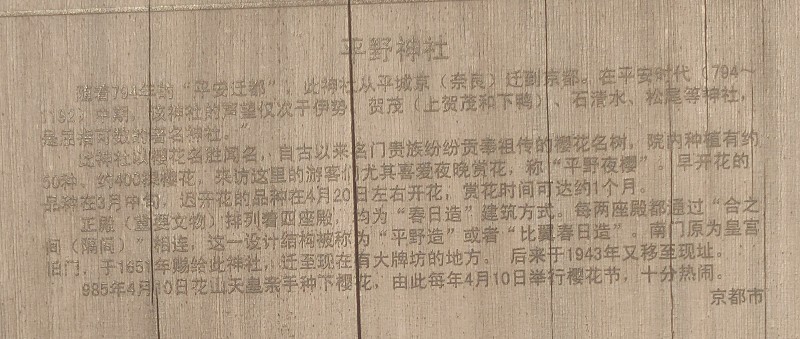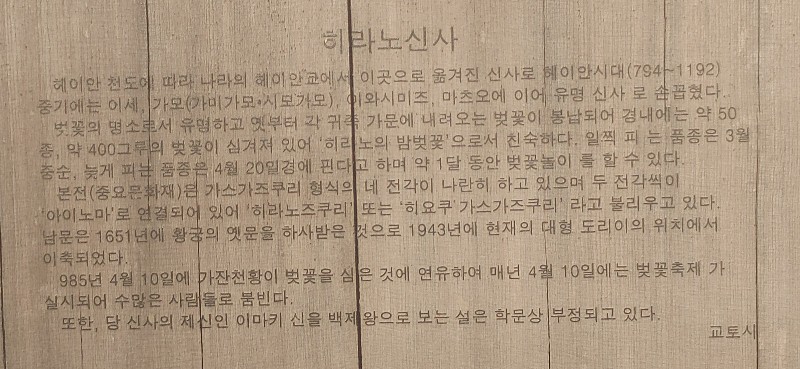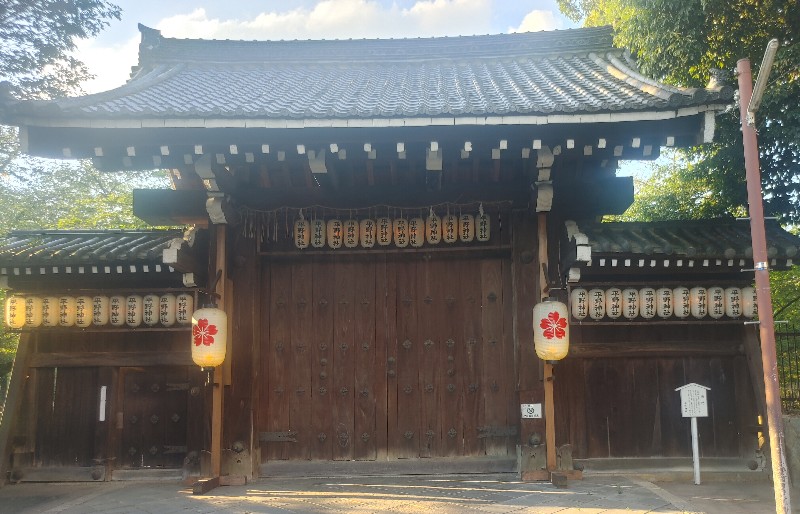 平野神社
平野神社 平安遷都に伴って、奈良の平城京からこの地に移された神社で、祭神として、今木神(いまきのかみ)、久度神(くどのかみ)、古開神(ふるあきのかみ)、比賣神(ひめのかみ)の四柱を祀(まつ)っている。平安時代中期には、伊勢、賀茂(上賀茂・下鴨)、岩清水(いわしみず)、松尾に次ぐ名社に数えられた。
桜の名所として名高く、古くから各公家伝来の桜が奉納されたことから、境内には約50種、約400本の桜が植えられており、「平野の夜桜」として親しまれている。早咲きの品種は三月中旬、遅咲きの品種は4月20日ごろに咲くといわれ、約一箇月間花見ができる。
歴代の朝廷に大変厚く崇敬され、律令の施行細目を定める「延喜式(えんぎしき)」で皇太子御親祭とされたほか、源氏や平氏をはじめ諸氏の氏神としても崇(あが)められた。
本殿(重要文化財)は、寛永年間(1624年~1644年)に建築されたもので、春日造(かすがづくり)の四殿を並べ、二段ずつが「合の間」で連結されており、「平野造(ひらのづくり)」又は「比翼春日造(ひよくかすがづくり)」と呼ばれている。南門は、慶安四年(1651年)に御所の旧門を下賜されたもので、昭和18年(1943年)に現在の大鳥居の位置から移築された。
寛和(かんわ)元年(985年)4月10日に花山天皇が桜をお手植えされたことにちなみ、毎年4月10日には桜祭りが行われ、多くの人でにぎあう。
京都市
駒札 : Google Map(北緯 35°01'54.64" 東経 135°43'53.84")
Hirano-jinja Shrine This shrine was moved to Kyoto from Heijo capital of Nara when the capital was transferred to Kyoto. In the middle of the Heian period (794~1192), this shrine was regarded as a highly prestigious shrine ranking only after Ise-jingu Shrine, Kamo Shrines (Kamigamo-jinja Shrine and Shimogamo-jinja Shrine), Iwashimizu-hachimangu Shrine, and Matsuno-o-taisha Shrine.
It is famous for cherry blossoms. As court nobles donated cherry trees handed down in each family from ancient times, there are aoorixunatekt 400 cherry trees of about 50 kinds. Cherry blossoms in Hirano-jinja Shrine are popular particularly for their beauty viewed at night. Early-opening flowers come into bloom in the middle of March while those blooming latest are at their best around April 20. Therefore, people can enjoy cherry blossoms for about a month at this shrine.
The main buildings (Important Cultural Assets) consists of four sanctuaries, placed in line, all built in the Kasuga-zukuri style, each pair of which is connected with Ai-no-ma, in-between structures. This style is called Hirano-zukuri, or Hirano style. The south gate used to be a gate of the Imperial Palace, which was donated to this shrine in 1651. This gate, formerly located where the huge Torii gate stands today, was transferred to the present location in 1943.
On April 10th every year, the cherry blossom festival is held to commemorate the planting by Emperor Kazan himself of cherry trees on this day in 985, and the shrine is crowded with many visitors.
Kyoto City





